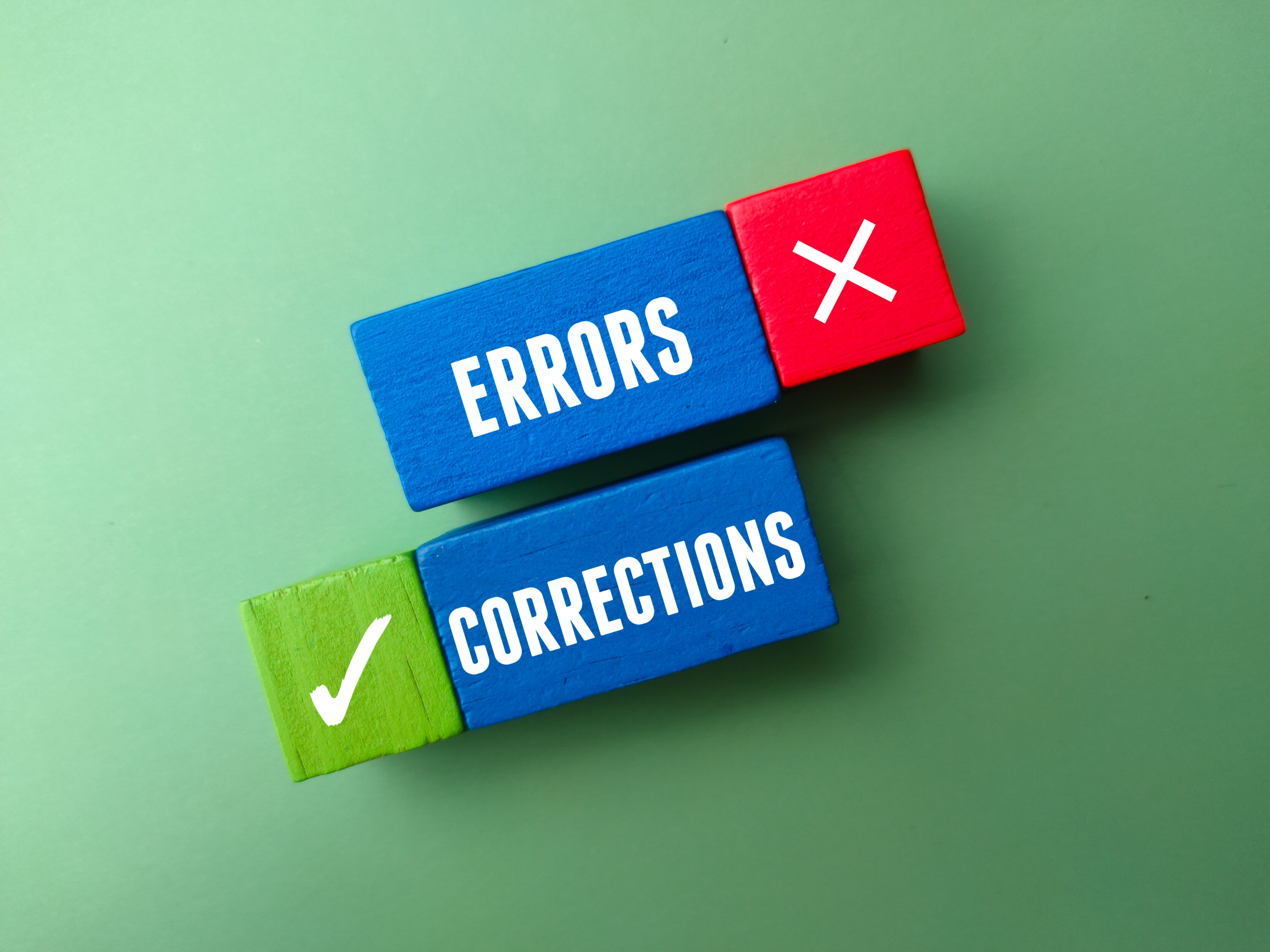How Can a Non-Conformance Report Help Your Business?
Many engineering companies create a Non-Conformance Report when they identify a Non-Conformance. Non-Conformance occurs when procedures, services, or products don’t meet quality regulations, or the requirements specified. They can happen in any department, including operations, activities, production, and processes. Companies often use Non-Conformance Software to properly manage Non-Conformances.
In this article, we’ll discuss Non-Conformance Reporting and how you can use them to improve your quality management.
What is a Non-Conformance Report?
A Non-Conformance Report is a document that describes inconsistencies between the actual status of products, services, or processes and the requirements specified by quality standards. It is also known as an NCR or Non-Conformity Report. Although a Non-Conformance Report can be created for any area within organizations, they are most commonly used in operations, production, and manufacturing.
An NCR is a standard document that describes the detail of the non-Conformity identified. It is used to understand the underlying risk due to the violation of requirements and enables employees to take relevant actions. Furthermore, an NCR helps to create a plan of action to prevent the non-conformance from happening again. It also assists with future audits and compliance.
When an NCR is created, issues can be defined and analyzed, and then be fixed correctly to ensure continued conformity.
A Non-Conformance Report contains the details of a Non-Conformance in a structured manner. Corrective action software can be used for this purpose. Accordingly, organizations, people, or projects that don’t meet safety and quality standards can be held accountable.
Types of Non-Conformance Reports
An organization normally standardizes and customizes manual Non-Conformance Reports. This means the organization will create a Non-Conformance Report that fits its requirements. With Non-Conformance Tracking System, you can often create documentation that has the required information available in a structured software environment.
Information Contained in Non-Conformance Reports
An organization can customize a Non-Conformance Report to fit its specific requirements. For example, they can add different headings and text fields to capture detailed information about different aspects of each Non-Conformance.
Some of the information you can typically find in a Non-Conformance Report includes:
- Identification number (reference)
- Date and time of the incident
- Location of the Non-Conformity
- Description of the Non-Conformity
- Department
- Responsible person(s)
- Signatures
- Initial analysis
- Cause of the Non-Conformance
- Corrective and preventive actions
- Significance
- Classification
Major and Minor Non-Conformance Reports
Organizations generally classify a Non-Conformance as Major or Minor based on the impact and severity of the Non-Conformance.
Major Non-conformance reports
As major non-Conformance reports generally have a significant impact on products, services, or processes you need to communicate them up the management chain. Huge violations of requirements include:
- System-wide personnel incident
- Unauthorized alterations of multiple documents
- Not meeting critical performance specifications
- Multiple unsigned or missing documents
- Processes out of control
As these non-conformances are severe, the corrective action you should take is likely to be extensive and complicated and you may even be required to make significant changes to products, services, or processes.
Minor Non-Conformance reports
Minor Non-Conformance Reports are not as severe as major ones, and they, therefore, have a lesser impact on products, services, or processes. Corrective actions for a minor Non-Conformance are also easier to implement and don’t need significant product, service, or process changes. Examples of minor non-Conformances include:
- Isolated personnel incident
- Unauthorized alteration of a single document
- Slightly out-of-tolerance measurement
- One missing or unsigned document from a series
- Use of unapproved equipment
Dealing with minor Non-Conformances is usually relatively easy as the required corrective action isn’t extensive. For example, if a machine isn’t on the approved list and was used, the corrective action may be as simple as using a different machine in the future or updating the list of approved machines.
Ways in Which Non-Conformance Reports Can Help Your Business
There are many benefits of using Non-Conformance reports in a business. These include:
- Prevent customer complaints.
- Improve products and services.
- Improve efficiency.
- Reduce operational costs.
- Comply with regulatory requirements.
- Prevent the reoccurrence of non-conformities.
- Optimize ROI.
- Improve communication.
Let’s look at each of these benefits in more detail.
1. Prevent customer complaints.
When customers receive services or products that don’t meet their expectations, they complain. Non-Conformance Reports help organizations to identify potential customer complaints and prevent them before they can happen.
2. Improve products and services.
Non-Conformance Control is crucial for improving a business’s products and services as it will reveal where you don’t comply with clients’ specifications.
Non-Conformance Reports help the company identify and fix problems with its products and services. Furthermore, by filling out Non-Conformance Reports, the business can take the steps required to prevent making the same mistake again.
3. Improve efficiency.
Organizations can improve the efficiency of their operations by addressing problems early. Non-Conformance Reports can help companies to streamline their processes by identifying and eliminating bottlenecks.
By using a Non-Conformance tracking system, the business can communicate, track, and manage the status of each Non-Conformance throughout the complete process from discovery to closure. This will help you to ensure that you perform corrective and preventive actions on time and that you find and address the root cause of the problem.
4. Reduce operational costs.
A business can prevent the cost of waste, scrap, and rework when they identify and correct problems early. Non-Conformance Reports can also help companies to prevent the cost of lost business and customer complaints.
Furthermore, the company will reduce money wasted in operations if it makes a decision on the Non-Conformance to not maintain or fix technical requirements. Communication and transparency are crucial to ensure that all stakeholders are aware and updated on the situation.
5. Comply with regulatory requirements.
Many businesses have to comply with regulatory requirements of AS9100, ECSS, ISO, and other standards that mandate that they must report Non-Conformances. Therefore, businesses can demonstrate their commitment to quality and improve their image by complying with those requirements.
Depending on the type of business and its location, the specific requirements will vary. Whether the business works in telecommunication, space, or aerospace, many legal systems require some type of Non-Conformance reports as part of regulatory compliance.
6. Prevent the reoccurrence of non-conformities.
A non-conformity report helps identify the root cause of a non-conformity and prevents it from occurring again. This can in turn improve the efficiency of operations as well as the quality of services and products.
When you need to write a report on a problem that you have identified, it is less likely that you will make the mistake again if you clearly understand what went wrong and why. When you implement a Non-Conformance reporting system, you are helping to ensure that people learn lessons from mistakes and that the quality of the company’s services and products improves.
7. Optimize ROI.
When an organization reports on Non-Conformances throughout all its elements, like people, time, manufacturing, tools, productions, operations, etc., it will allow you to track the impact on customers, other departments, and the whole business.
Issues that arise that have a serious impact on the quality of service or products will be handled by top management. In this way, they can ensure that they maximize their return on investment.
8. Improve communication.
Effective communication is crucial for any organization to run smoothly. Non-Conformance Reports help in improving communication by sharing information about problems and their resolutions between all relevant parties.
Improved coordination and communication between departments will help to prevent the waste of resources and the duplication of effort. When requirement issues arise in one department these can be shared with other departments to be taken into account during the development process.
Managing Non-Conformance Reports
In smaller companies, a quality manager handles non-conformance reports, and they liaise with department heads or top management. With larger companies, a Non-Conformance Board often undertakes this task.
The responsible party must deal with services and products that don’t meet the requirements. Options may include:
- Scrapping – The product is scrapped and is not used any longer.
- Reworking – The product is refurbished to meet the requirements.
- Regrading – The product is downgraded. This means it can still be used, although it doesn’t meet the requirements.
- Repairing – The product is fixed to meet the requirements.
- Doing nothing – Although the product doesn’t meet the requirements, it is used as is.
Using Non-Conformance Reporting Software
Managing and reporting on Non-Conformances can be a time-consuming and complex task. Therefore, businesses often use software to automatically create, assign, and track Non-Conformance Reports to streamline the process.
Non-Conformance reporting software can help businesses to:
- Improve the management of Non-Conformances.
- Improve communication.
- Save time.
- Reduce the risk of human error.
- Avoid duplication of effort.



